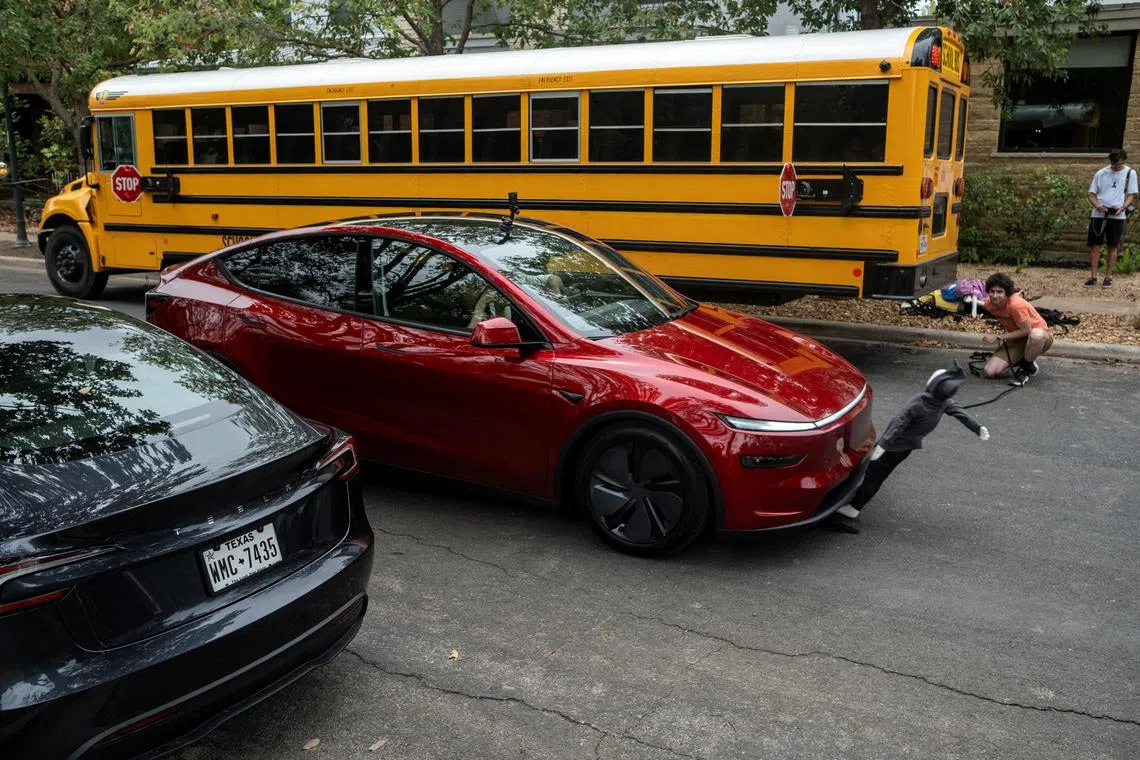Texas enacts robotaxi law ahead of Tesla’s roll-out
Sign up now: Get ST's newsletters delivered to your inbox

The launch follows the dramatic meltdown in relations between Mr Elon Musk and Mr Donald Trump, which saw a cascade of bitter attacks from both men.
PHOTO: REUTERS
Follow topic:
AUSTIN – Texas Governor Greg Abbott, a Republican, has signed legislation requiring a permit to operate self-driving vehicles just before Tesla’s planned launch of a robotaxi trial on June 22 in Austin, according to the governor’s website.
The law does not take effect until Sept 1, but the governor’s approval of it on June 20 sends a strong signal that state officials from both parties want the driverless-vehicle industry to proceed cautiously.
A group of Democratic state lawmakers last week asked Tesla to delay its planned robotaxi trial because of the legislation.
Neither Tesla nor the governor’s office immediately responded to requests for comment.
The law marks a reversal from the state’s previous anti-regulation stance on autonomous vehicles. A 2017 Texas law specifically prohibited cities from regulating self-driving cars.
In recent days, Tesla has sent invites to a select group of Tesla online influencers for a small and carefully monitored robotaxi trial, which the company said would include 10 or 20 Model Y vehicles operated in a limited zone of Austin.
The governor’s signature on the law puts the automaker in the position of choosing whether to proceed with a roll-out it might have to terminate before Sept 1.
The law requires autonomous-vehicle operators to get approval from the Texas Department of Motor Vehicles before operating on public streets without a human driver.
It also gives state authorities the power to revoke permits if they deem a driverless vehicle “endangers the public” and requires firms to provide information on how police and first responders can deal with their driverless vehicles in emergency situations.
Musk’s safety pledges
The planned Tesla robotaxi launch, which the company warned might be delayed, comes after more than a decade of chief executive Elon Musk’s unfulfilled promises to deliver self-driving Teslas.
Most of Tesla’s sky-high stock value now rests on its ability to deliver robotaxis and humanoid robots, according to many industry analysts. Tesla is by far the world’s most valuable automaker.
Mr Musk has said Tesla would be “super paranoid” about safety for the Austin roll-out. The company planned to operate only in areas it considered the safest and to have “safety monitors” riding in the front passenger seat.
It is not clear how much control the monitors would have over the vehicles in an emergency situation.
The service in Austin will have other restrictions as well. Tesla plans to avoid bad weather, difficult intersections, and will not carry anyone below the age of 18.
Mr Musk has said he is ready to delay the start for safety reasons, if needed.
The planned launch has generated buzz among Tesla fans.
“Wow. We are going to ride in driverless Teslas in just a few days. On public roads,” posted X user Omar Qazi, who often writes about Tesla using the handle @WholeMarsBlog and who received an invite.
Commercialising autonomous vehicles has been risky and expensive. GM’s Cruise was shut down after a fatal accident and regulators are closely watching Tesla and its rivals, Alphabet’s Waymo, which runs a paid robotaxi service in several US cities, and Amazon’s Zoox.
Tesla is also bucking the young industry’s standard practice of relying on multiple technologies to read the road, using only cameras. That, said Mr Musk, will be safe and much less expensive than radar and other systems added by rivals. REUTERS

